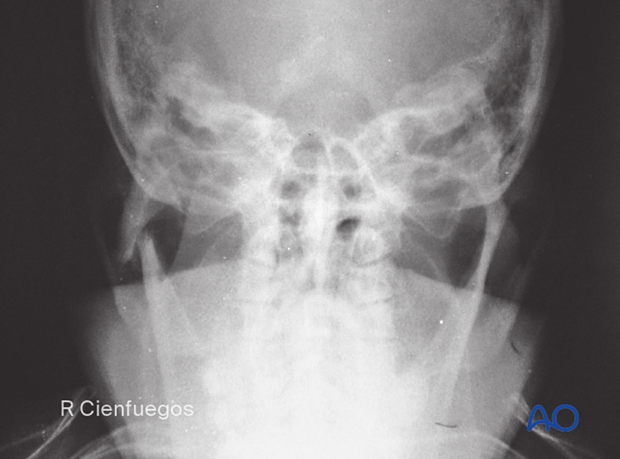Biomechanics of the mandible
1. Introduction
Forces applied to the mandible cause varying tension and compression zones, depending on where the bite force is located.
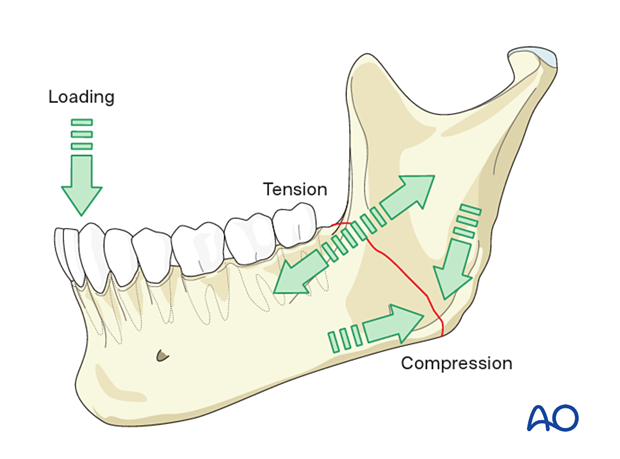
2. Muscle forces
The mandible deforms during function based on the origin and insertion of the muscles of mastication.
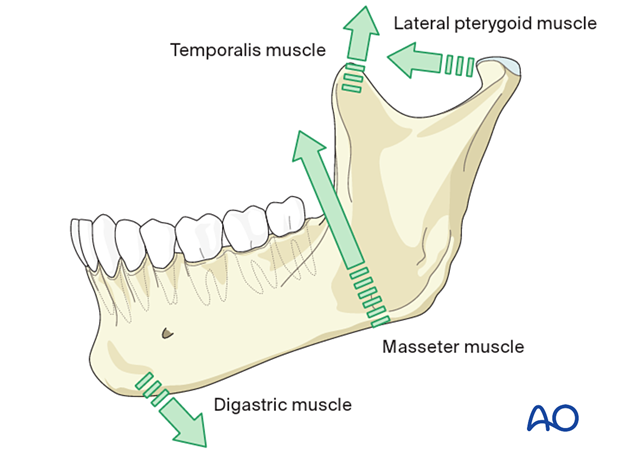
3. Tension and compression zones
The mandible's superior border is the tension zone, and the inferior border is the compression zone while the mandible is in function.
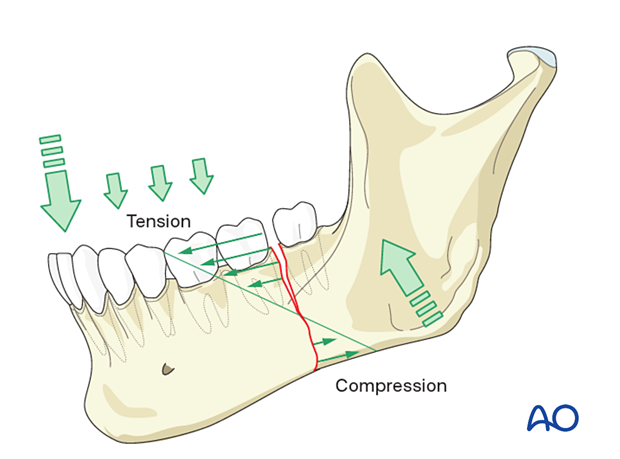
4. Ideal lines of osteosynthesis
Maxime Champy popularized the treatment of mandible fractures with miniplate fixation along the ideal lines of osteosynthesis. This approach is a form of load-sharing osteosynthesis applied in simple, well-buttressed fracture patterns with an acceptable amount of bone stock.
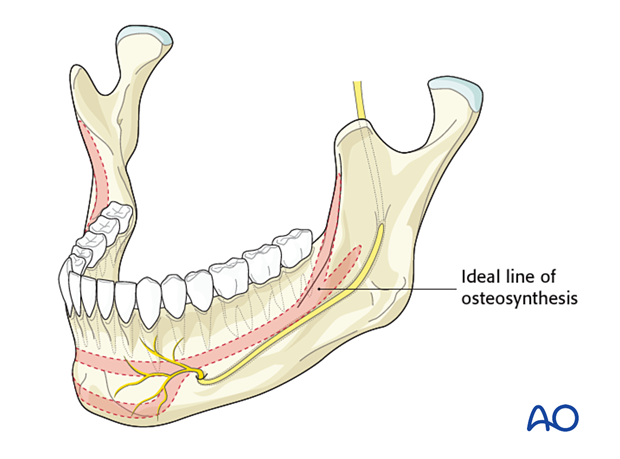
This diagram is an adaptation of Maxime Champy's studies showing the mandible's maximal torsional forces between the two canines. This diagram explains why it is essential to use two parallel means of fixation in symphyseal and parasymphyseal fractures. It also explains why one means of superior fixation may be adequate for the body and mandibular angle in non-comminuted fractures where there is load sharing.
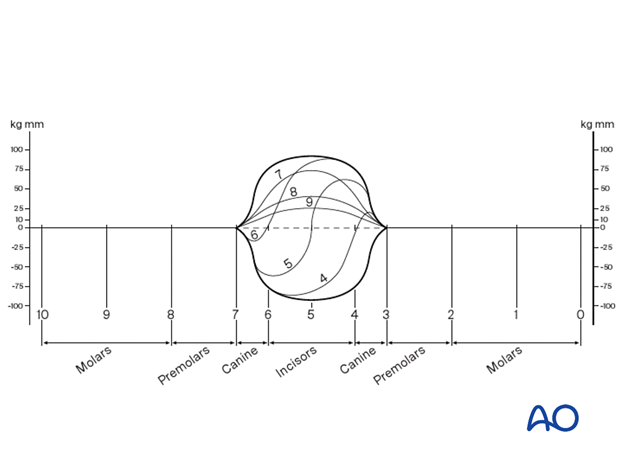
It is important to emphasize that even though there are two Champy lines in the mandibular angle it is only necessary to place the plate on one of these lines.
Sometimes, after a superior plate placement, there can be an unrecognized splay at the inferior mandibular angle.
An advantage of placing a plate superiorly behind the molar is that this splay will often close with time.
A disadvantage of using the lateral line is that plate fixation may be more difficult without maximum lip retraction or use of a trocar.
Another disadvantage with a lateral plate is that if there is a splay at the inferior angle, there is less chance that this will close over time.
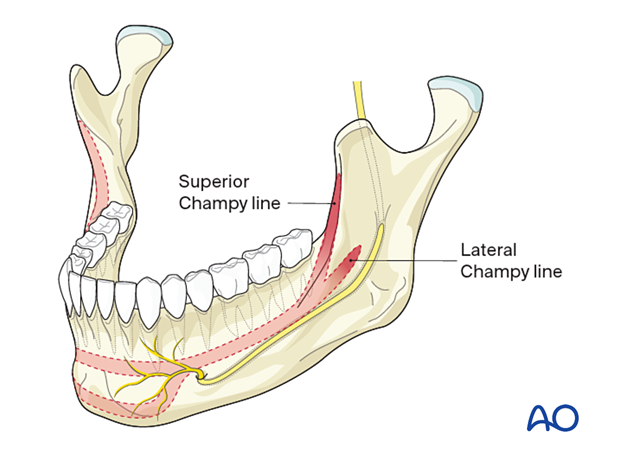
5. Bone strength
The mandible is strongest in the midline (symphysis) and weakest at both ends (condyles). The most common area of fracture in the mandible is, therefore, the condylar region.
A midline blow to the mandible often results in bilateral condylar fractures. A lateral blow to the mandible may cause a contralateral fracture of the condyle.
6. Clinical findings
With a condylar fracture, there is often shortening of the ramus on the affected side, which results in an ipsilateral premature contact of the teeth and a contralateral open bite. Clinically one may also note lateral deviation to the side of the fracture with mouth opening.
In case of bilateral fractures, the patient may present an anterior open bite. The condylar fragment may be displaced based on the fracture's angulation and predominant muscle pull (most often medially due to the lateral pterygoid muscle pull).
